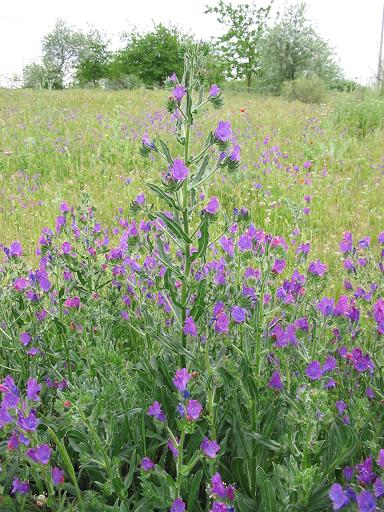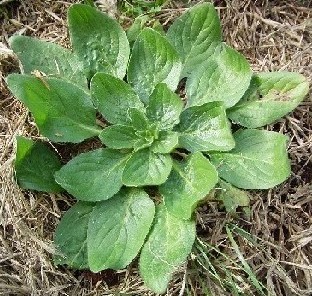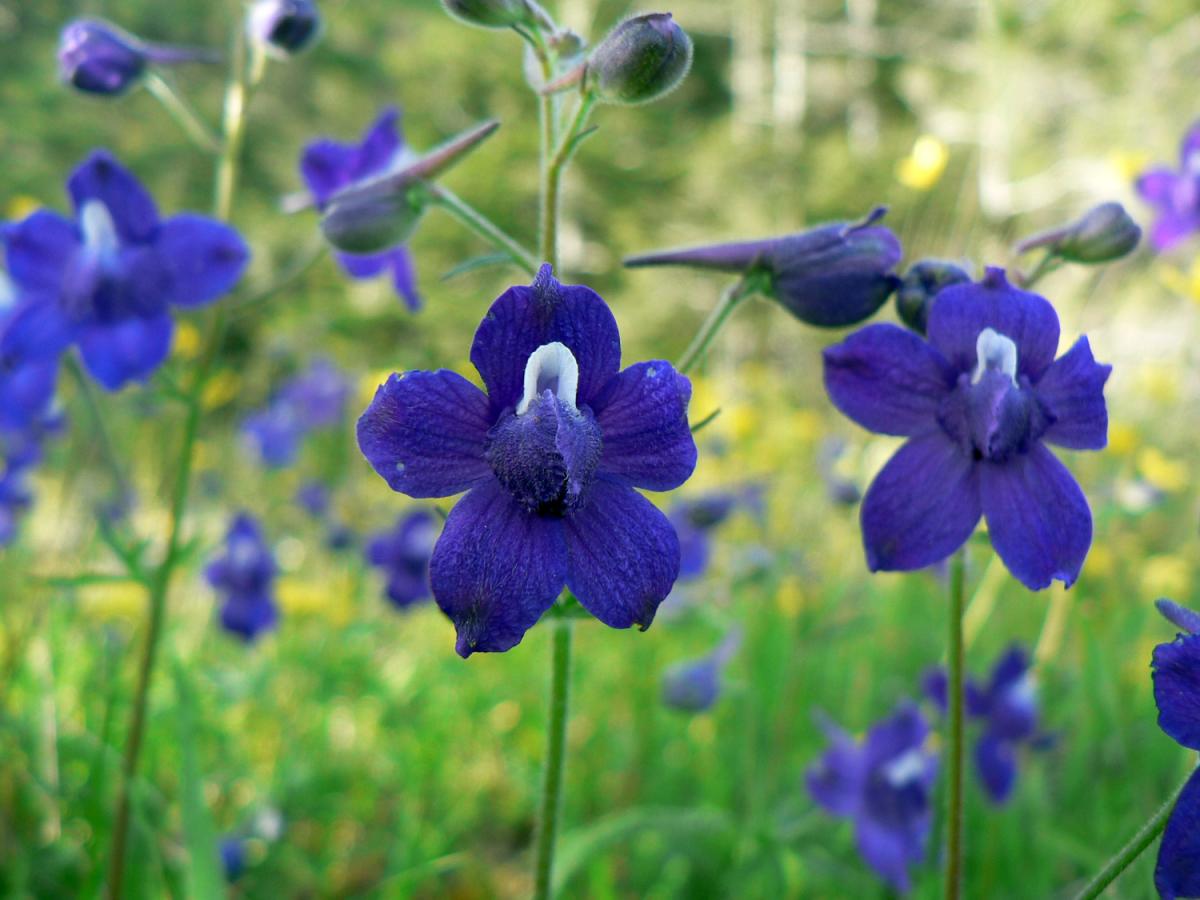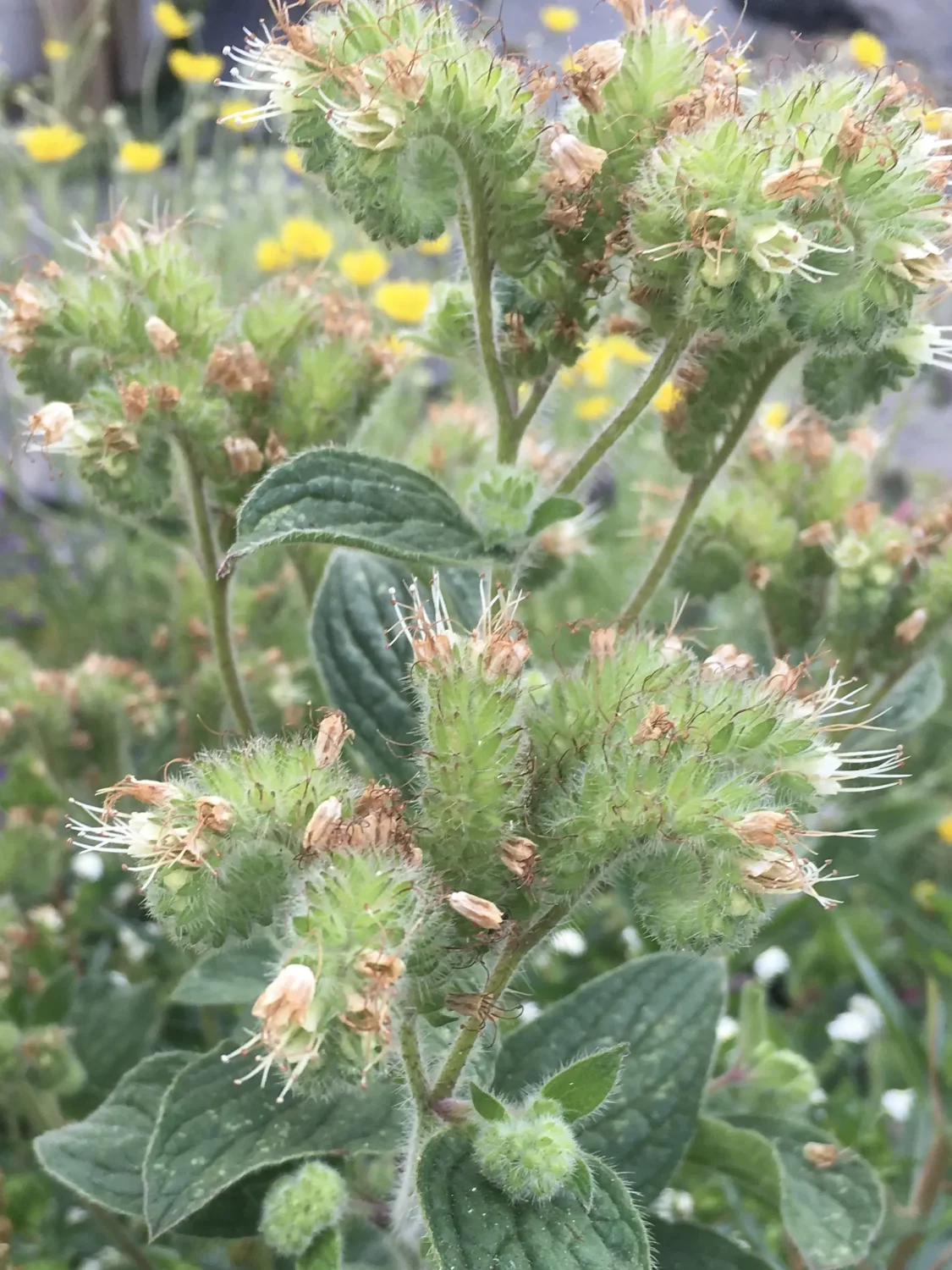Introduced species: Paterson’s curse (Echium plantagineum)
Characteristics: Paterson’s curse–also known variously as purple viper’s-bugloss, Salvation Jane, blueweed, Lady Campbell weed, and Riverina bluebell–is an erect winter annual (germinating in autumn to produce seed and die the following year) or biennial with a deep taproot. Stems on adult plants can be anywhere from 20 cm (8 in) to nearly 2 m (6 ft) tall. Leaves are alternate and hairy. Basal and rosette leaves range from oval to elongated, with distinct lateral veins and wavy margins; basal leaves may be more upright in dense populations. Rosettes vary from 10 to 35 cm (4 to 14 in) in diameter and may be hard to distinguish from those of other rosette-forming species. Leaves on the stems are narrow, smaller than rosette leaves. Trumpet-shaped, blue-purple flowers appear at the tip of each fiddleneck-like inflorescence; blooms may emerge anytime from March through June in Oregon. These give way to four brown-grey nutlets per flower, surrounded by a bristly husk. Paterson’s curse contains alkaloids that make it toxic to livestock (you had to figure anything with this many aliases would be up to no good!).
Spread: Paterson’s curse reproduces by seed. Individual plants can produce up to 10,000 seeds, each viable in soil for a decade or more. Native to the Mediterranean region, its habitat is open woodlands dominated by evergreen oak trees, a habitat similar to that of western Oregon’s oak savanna, so local introductions could spread rapidly. It is very aggressive in pasture where it has been introduced, e.g. in Australia, and may also occur in a variety of disturbed and agricultural sites. So far, it has been found in two locations in Oregon, one on a Linn County roadside and the other in a pasture in Douglas County; it is under intensive treatment in both locations. Seed of this plant has been found as a contaminant in wildflower mixes in Oregon, so be sure to your seed mixes come from a trusted source. If you suspect you have seen/found this species, call the Oregon Invasive Species Hotline at 1-866-INVADER (468-2337).
Control: Manual removal of plants prior to flowering is recommended for small infestations. It is important to revisit these infested sites, especially in the spring, to ensure that seedlings are removed before flowering. The presence of intact native vegetation discourages establishment of Paterson’s curse.
Native Replacements: A pretty, blue-flowered native perennial that will do well in habitats similar to those occupied by Paterson’s curse is the Menzies’ larkspur (Delphinium menziesii). Or, if the fiddleneck shape of the inflorescence catches your eye, varied-leaf phacelia (Phacelia heterophylla) unfurls off-white flowers that are absolute favorites for native bees!




